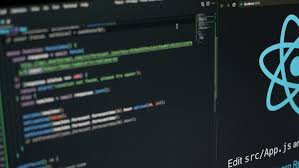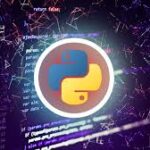NLP Interview Questions and Answers Preparation Practice Test | Freshers to Experienced | Detailed Explanations
SUMMARY
Welcome to the comprehensive “NLP Interview Questions and Answers Preparation Practice Test,” designed to help individuals—whether freshers or experienced professionals—master the essential concepts and techniques in Natural Language Processing (NLP). This course not only prepares you for job interviews but also deepens your understanding of NLP, making it a valuable resource for anyone looking to excel in this rapidly evolving field.
Course Overview
The course is divided into six essential sections, each focusing on critical aspects of NLP, from foundational concepts to advanced applications. This structured approach ensures that you develop a comprehensive understanding of NLP, enabling you to tackle interview questions confidently.
Section 1: Foundations of NLP
In this foundational section, you will explore the core principles that underpin NLP:
- Tokenization: Learn the process of breaking text into smaller units, or tokens, essential for text analysis.
- Stemming vs. Lemmatization: Understand these two techniques for reducing words to their base or root form, knowing when to apply each.
- Part-of-Speech (POS) Tagging: Discover how to identify the grammatical category of words within a sentence.
- Named Entity Recognition (NER): Learn methods to identify and classify entities like names and locations in text.
- Stop Words Removal: Understand the importance of filtering out common words that do not add significant meaning to analysis.
- Word Embeddings: Explore how words can be represented as vectors in a continuous space, which is crucial for many NLP tasks.
Section 2: Text Representation and Feature Engineering
This section delves into various techniques for representing text data:
- Bag-of-Words Model: Learn how to represent documents as collections of words, ignoring grammar and word order.
- TF-IDF (Term Frequency-Inverse Document Frequency): Understand this statistical measure that evaluates the importance of a word in a document relative to a corpus.
- Word2Vec and GloVe: Explore these popular methods for creating word embeddings that capture semantic relationships between words.
- Character-level and Document Embeddings: Discover how to create representations for words at the character level and for entire documents.
Section 3: NLP Models and Algorithms
In this section, you’ll gain insights into various models and algorithms used for NLP tasks:
- Naive Bayes Classifier: Familiarize yourself with this simple yet effective classifier for text classification tasks.
- Support Vector Machines (SVM): Understand how SVMs are applied in sentiment analysis and classification.
- Hidden Markov Models (HMM) and Conditional Random Fields (CRF): Learn about these models used for sequence labeling tasks.
- Recurrent Neural Networks (RNNs) and Transformer Models: Delve into advanced architectures like BERT and GPT that revolutionize language understanding and generation.
Section 4: Syntax and Parsing
Here, you’ll explore the syntactic structure of sentences and parsing techniques:
- Context-Free Grammars (CFG): Understand the rules for generating valid sentence structures.
- Dependency and Constituency Parsing: Learn methods for identifying grammatical relationships and breaking sentences into phrases.
- Parsing Techniques: Familiarize yourself with algorithms like Earley Parser and CYK for syntactic parsing.
Section 5: Semantic Analysis
This section focuses on understanding and extracting meaning from text:
- Semantic Role Labeling (SRL): Learn how to identify the roles of entities in sentences.
- Word Sense Disambiguation (WSD): Explore techniques to determine word meanings based on context.
- Sentiment Analysis: Gain insights into how to determine the emotional tone in text.
- Coreference Resolution: Understand how to resolve references across sentences or documents.
Section 6: Applications and Advanced Topics
In the final section, you will explore real-world applications and future trends in NLP:
- Machine Translation: Learn about methods for translating text between languages.
- Text Summarization: Discover techniques for generating concise summaries from larger texts.
- Question Answering Systems and Dialogue Systems: Understand how NLP models can facilitate human-like conversations and answer questions effectively.
- Ethical Considerations: Discuss the ethical challenges in developing and deploying NLP systems, an increasingly important area in tech.
Description
NLP Interview Questions and Answers Preparation Practice Test | Freshers to Experienced
Welcome to the ultimate practice test course for mastering Natural Language Processing (NLP) interview questions. Whether you’re preparing for a job interview or looking to enhance your knowledge in NLP, this comprehensive course is designed to help you ace your interviews with confidence.
In this course, we cover six essential sections, each focusing on key concepts and techniques in the field of NLP. From foundational principles to advanced applications, you’ll gain a deep understanding of NLP and develop the skills needed to tackle interview questions effectively.
Section 1: Foundations of NLP In this section, you’ll dive into the fundamental concepts that form the backbone of NLP. From tokenization to word embeddings, you’ll explore the building blocks of natural language processing and understand how text data is processed and represented.
- Tokenization: Learn how to break down text into individual tokens or words.
- Stemming vs. Lemmatization: Understand the differences between stemming and lemmatization and when to use each technique.
- Part-of-Speech (POS) Tagging: Explore how to assign grammatical categories to words in a sentence.
- Named Entity Recognition (NER): Discover techniques for identifying and classifying named entities such as people, organizations, and locations.
- Stop Words Removal: Learn how to filter out common words that carry little semantic meaning.
- Word Embeddings: Explore methods for representing words as dense vectors in a continuous space.
Section 2: Text Representation and Feature Engineering This section focuses on different approaches for representing text data and extracting relevant features for NLP tasks.
- Bag-of-Words model: Understand how to represent text data as a collection of word vectors.
- TF-IDF (Term Frequency-Inverse Document Frequency): Learn a statistical measure for evaluating the importance of words in a document corpus.
- Word2Vec: Explore a popular word embedding technique based on neural networks.
- GloVe (Global Vectors for Word Representation): Understand how GloVe embeddings capture global word co-occurrence statistics.
- Character-level Embeddings: Discover techniques for representing words at the character level.
- Document Embeddings: Learn how to generate embeddings for entire documents using techniques like Doc2Vec.
Section 3: NLP Models and Algorithms This section covers a range of NLP models and algorithms commonly used for tasks such as classification, sequence labeling, and language generation.
- Naive Bayes Classifier: Explore a simple yet effective probabilistic classifier for text classification tasks.
- Support Vector Machines (SVM): Understand how SVMs can be used for text classification and sentiment analysis.
- Hidden Markov Models (HMM): Learn about HMMs and their applications in tasks like part-of-speech tagging and named entity recognition.
- Conditional Random Fields (CRF): Explore a discriminative model used for sequence labeling tasks.
- Recurrent Neural Networks (RNNs): Understand how RNNs can capture sequential dependencies in text data.
- Transformer Models: Dive into advanced models like BERT and GPT for tasks such as language understanding and generation.
Section 4: Syntax and Parsing In this section, you’ll learn about the syntactic structure of sentences and techniques for parsing and analyzing text.
- Context-Free Grammars (CFG): Understand the formal grammar rules used to generate syntactically valid sentences.
- Dependency Parsing: Learn how to parse sentences to identify the grammatical relationships between words.
- Constituency Parsing: Explore techniques for breaking down sentences into their constituent phrases.
- Shallow Parsing (Chunking): Discover methods for identifying and extracting specific types of phrases from text.
- Parsing Techniques: Learn about algorithms like the Earley Parser and CYK Algorithm used for syntactic parsing.
- Transition-based vs. Graph-based Parsing: Compare different approaches to parsing based on transition systems and graph algorithms.
Section 5: Semantic Analysis This section focuses on understanding the meaning of text and extracting semantic information for various NLP tasks.
- Semantic Role Labeling (SRL): Explore techniques for identifying the roles played by different entities in a sentence.
- Word Sense Disambiguation (WSD): Learn how to disambiguate the meaning of words based on context.
- Semantic Similarity Measures: Understand methods for quantifying the similarity between words or sentences.
- Semantic Parsing: Explore techniques for converting natural language utterances into formal representations like logical forms.
- Sentiment Analysis: Learn how to analyze the sentiment expressed in text data, ranging from positive to negative.
- Coreference Resolution: Discover techniques for resolving references to entities across multiple sentences or documents.
Section 6: Applications and Advanced Topics In this final section, you’ll explore real-world applications of NLP and delve into advanced topics shaping the future of the field.
- Machine Translation: Learn about techniques for translating text from one language to another.
- Text Summarization: Explore methods for automatically generating concise summaries of longer texts.
- Question Answering Systems: Understand how NLP models can be used to answer questions posed in natural language.
- Natural Language Generation (NLG): Learn how to generate human-like text based on structured data or prompts.
- Dialogue Systems: Explore the design and implementation of conversational agents, also known as chatbots.
- Ethical Considerations in NLP: Discuss the ethical challenges and considerations involved in developing and deploying NLP systems.
Enroll in this practice test course today and take your NLP interview preparation to the next level. With a comprehensive overview of key concepts, hands-on practice questions, and detailed explanations, you’ll be well-equipped to excel in any NLP interview setting. Whether you’re a seasoned professional or just starting your NLP journey, this course will provide valuable insights and preparation strategies to help you succeed. Don’t miss out on this opportunity to master Natural Language Processing and land your dream job in the field. Enroll now and start your journey towards NLP excellence!
Who this course is for:
- Students or professionals seeking to enhance their knowledge and skills in NLP.
- Data scientists, machine learning engineers, and software developers looking to specialize in NLP.
- Individuals preparing for NLP-related job interviews in industries such as technology, healthcare, finance, and more.
- Anyone curious about the field of NLP and eager to explore its applications and advancements.
Conclusion
Enrolling in this practice test course will significantly enhance your NLP interview preparation. With a thorough overview of key concepts, hands-on practice questions, and detailed explanations, you will be well-equipped to excel in any NLP-related interview setting. This course is not only for seasoned professionals but also for anyone beginning their journey in NLP.
Whether you’re a data scientist, a machine learning engineer, or simply someone interested in exploring the potential of NLP, this course provides the insights and preparation strategies you need. Don’t miss out on the opportunity to master Natural Language Processing and advance your career in this exciting field. Enroll now and embark on your path to NLP excellence!










